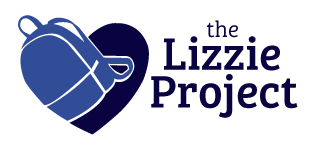ANNUAL MISSIONS TRIP
Elementary & Secondary Education
Honduras is one of the poorest countries in Central America. The multi-generational cycle of poverty affects thousands of school-age children. Many children do not go to school because their families cannot afford the costs of uniforms, backpacks, school supplies and food to enable them to excel at their studies. READ MORE
Keeping students in school and progressing to the next level is a key goal of The Lizzie Project. The ministry seeks donors who have a heart for providing scholarship funds for various levels of education:
- Kindergarten – 1st Grade – 8th Grade
- 9th Grade – 12th Grade (High School)
- Technical Vocational School
- Nursing Vocational School
Financial assistance for students comes through scholarships that help and encourage, but not make families dependent on outside sources. Academic accountability and attendance are requirements for students to remain in scholarship programs.
In 2017, 130 students received school assistance through the ministry of The Lizzie Project. Highlights of the annual Mission Trip involve dispersing backpacks, school supplies, clothing and shoes. Mission Team Members say the best part of the trip to Honduras is giving and receiving hugs when backpacks are handed out.
KINDERGARTEN – 8th GRADE
Scholarship Cost: $100 provides scholarship funds for a student’s uniform, backpack and books for an academic year.
Quick Facts:
- If children cannot afford their uniforms or books, they are not allowed to attend school.
- The Honduras government provides free school up to the 6th grade
- When a child completes the 6th grade, they will frequently drop out.
9th – 12th GRADE (HIGH SCHOOL)
Scholarship Cost: $100 provides scholarships funds for a student’s backpack, books and expenses for an academic year.
Quick Facts:
- High School is not provided by the government and must be paid by students and/or their families.
- Drop-out rates are high because students need to work to bring income to their families.
- High School is more like vocational school, focusing on the students’ abilities and interests.
Vocational Schools
Higher education is the key to community transformation. Vocational studies often begin at the high school level which prepares a student to develop marketable skills at an early age. Other times, students finish high school and then enter vocational schools for specific skills and expertise.
Through strategic planning, miracles, prayer and faithful supporters, WGM (World Gospel Mission) has developed two impactful vocational schools in Honduras. These learning centers provide a biblical worldview, a student’s understanding of his or her giftedness, along with opportunities for employment.
Vocational Education Center
Scholarship Cost
$750 for an academic year. Your gifts enable students to learn certified technical skills, enabling them to work and sustain their families.Quick Facts
- In operation since 2006.
- Offered to the neediest youth in the region.
- Trains approximately 125 students per academic year.
Programs presently include
- Auto, Motorcycle & Refrigeration mechanics
- Welding
- Baking and decorating
- Sewing and Home Economics
Choluteca Nursing School
Scholarship Cost
$1,000 for an academic year. Your gifts enable students to be certified in Nursing, setting them up to serve their communities through medicine.Quick Facts
- First of its kind in Honduras!
- Joint-venture with the Ohio State University College of Nursing.
- Opened February 2017.
- Program will be replicated throughout the country.
- Started with first year of high school but will progress to be three-year program.
- Fulfills the country’s desperate need for trained, certified nurses.
Educational Challenges Facing Poor Families
- Honduras is one of the most impoverished countries in Central America.
- The government only provides free education up through grade 6.
- Many children are unable to attend school because their families cannot afford the mandatory uniforms or supplies
- Many schools are 1 or 2 rooms with all grades and a single teacher. Most are in remote villages, often several miles from homes, making transportation difficult.
- Most of the time, school transportation is not provided. Many schools are over five miles from where the children live. Although bicycles are a reliable means of transportation, rugged roads may blow out tires or damage bikes, making them un-rideable.
- Many children leave school at a young age to help support their families by working, creating a generational cycle of poorly-educated parents unable to provide a higher standard of living for their children.
- Students often repeat grades because of frequent dropping in and out of school. It takes a little over nine years for the average student to complete the 6th grade.
- High school education, typically vocational training, is not provided for free for by the government and is thus out of reach for most families.
- Only 30% of children attend secondary school.
- The country struggles with the lack of educational resources, schools, and poor teacher training.
